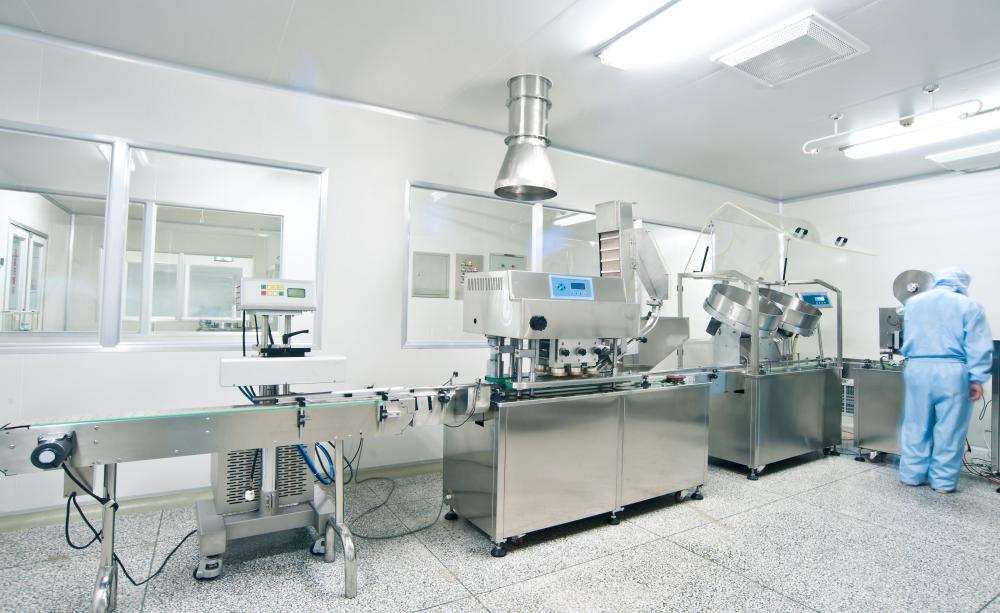At HomeQuestionsAnswered, we're committed to delivering accurate, trustworthy information. Our expert-authored content is rigorously fact-checked and sourced from credible authorities. Discover how we uphold the highest standards in providing you with reliable knowledge.
What is an Air Purifier?
An air purifier is any device used to remove mold, cigarette smoke, dust, pet dander and other pollutants and allergens from the air. The most popular type of air purifier for at-home use are High Efficiency Particulate Air (HEPA) filters. First used during WWII to capture radioactive dust, HEPA filters physically clean the air by "catching" the bacteria and pollutants as air passes through them. In order for HEPA filters to be efficient, all the air inside a room or building must enter through the filter.
In the US, HEPA filters are regulated by US Department of Energy. Any products branded as "HEPA-type" or "99% HEPA" do not meet this requirement and should be purchased with caution, if at all.

HEPA filters cannot remove gasses, odors or viruses from the air, but there are other types of purifiers that can remove these smaller molecules. Ionizing purifiers, for example, release electrically charged ions which attach themselves to pollutants like magnets. Depending on the device, these ions that are released can be liquid or gas. The liquid ions will simply absorb the pollutants, while the gas ions will remove the pollutants by taking them to a charged plate inside the air purifier to "dispose" of them. There is no cost for filter replacement in this type of purifier since most can simply be wiped down with soapy water or cleaned with a vacuum attachment.

Activated carbon filters can also be used to filter out harmful gasses or odors. These air purifying filters are created from charcoal that is treated with oxygen. This process creates millions of tiny pores that absorb gases and odors much like a sponge. It is because of this absorption, that filter replacement is necessary in order to maintain efficiency.
There is also a process called photocatalytic oxidation that can be used alongside a HEPA filter to better sterilize the air. In this process, ultraviolet (UV) rays are utilized to kill any viruses or germs that were not trapped by the filter.

One last type of air purifier is an ozone generator. Ozone generators release very high levels of oxygen in order to sterilize a space from harmful toxins caused by serious mold, mildew and bacteria problems. This is considered a "shock treatment" and is usually done commercially and in uninhabited spaces.
A few things to consider when purchasing an air purifier include space, cost, noise and ozone. The larger the room, the larger the surface of the filter will need to be. As a result, you'll need to dedicate a larger area to your purifier.

Of course, cost will be a major issue when buying an air purifier. Installing a HEPA filter air purifier into an HVAC system may be worth the expense to some, but not to others. Besides the cost of installation or initial purchase, consider the ongoing cost of filter replacement.
Another factor to consider is noise. Air purifiers are available both with fans and without. Choosing a quieter, fanless model will mean giving up some efficiency since fans cause the air to circulate and filter more quickly.

Finally, there is ozone to consider. Ozone is three oxygen molecules (O3) and is a harmful pollutant. It can be toxic when produced in large quantities, and while most air purifiers produce only trace amounts, it may be worth checking it out just in case.
AS FEATURED ON:
AS FEATURED ON:















Discussion Comments
I have a Hyfrolife machine (it looks like a jet engine) made by Royal of Cleveland, from around the 1960's. It has a 15 min. timer and I think it is an ion machine? I am on Collector's Weekly and put it online. I really want to identify this! It has nine patents, maybe all by Elmer J. Casper.
Post your comments